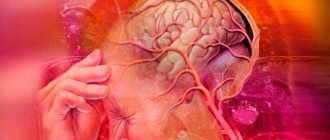Read on this page:
Withdrawal syndrome can vary in severity, and its symptoms vary for different types of addiction. The syndrome develops when quitting drugs, alcohol, or nicotine. This is a set of painful and unpleasant manifestations of physical and psychological discomfort.
The psychoactive drug is involved in biochemical processes, so when the body stops receiving it, the person’s well-being worsens. This is how the body lets you know that it needs a new dose, stimulation to work, to which it has become accustomed during chemical dependence. This is a clear sign that a person has developed a persistent physical dependence on a psychoactive drug.
Alcohol withdrawal
Alcohol withdrawal syndrome occurs in alcohol-dependent people at the second stage of the disease. It is at this moment that a person begins to drink heavily. What is the mechanism of the occurrence of drunkenness?
When alcohol has become a full-fledged participant in metabolic processes in the body, a person may experience withdrawal symptoms even from a small dose of alcohol. Signs of withdrawal syndrome will be painful and unpleasant symptoms, which we will list below. To relieve them, the patient drinks the next dose of alcohol - this leads to a drunken state.
Signs of alcohol withdrawal syndrome
- Violation of the body's thermoregulation.
- Blood pressure surges, tachycardia.
- Headache.
- Lack of appetite.
- Problems with the gastrointestinal tract of various kinds.
- Depression, aggression.
- Sleep disorders.
- Tremor of the limbs.
- Strong desire to drink alcohol.
Signs
Long-term use of ethyl alcohol can lead to various consequences. Their character depends on the state of the human body, its health, characteristics of the nervous system, etc.
General manifestations:
- Exhaustion of the body
- An uncontrollable desire to drink again,
- Headache, dizziness, heaviness in the head,
- Unpleasant taste in mouth, vomiting, nausea,
- Chills in the body, trembling in the hands,
- Lack of appetite,
- A clear symptom is a significant impairment of attention; the patient cannot concentrate on anything.
Mental signs:
- Depression,
- Attacks of aggression and anger,
- The mood often changes - from anger to indifferent melancholy,
- Clearly increased anxiety
- Convulsive seizures - if the case is severe.
Manifestations from internal organs:
- Heart pain, interruptions in the work of the heart, its rapid beating,
- Blood pressure is very high
- Abdominal pain, signs of acute gastritis,
- Pain under the right hypochondrium,
- Broken stool.
Cupping
Relieving alcohol withdrawal syndrome at home is appropriate if the patient’s condition does not border on very severe. First of all, it is worth cleaning the cavity of the stomach and intestines - lavage and enema.
Next, you need to ensure plenty of fluids, for which mineral water, kefir, compote, juice or herbal decoctions may be suitable. The following methods will also help relieve this severe hangover:
- Cardamom or cumin seeds - chew them several times throughout the day
- Juice from fresh cabbage or cucumbers - it will perfectly replenish the water-salt balance.
- The bath is an effective remedy if the patient does not have heart problems.
- Brine from any vegetables in a jar is a liquid that has long been known to everyone, which alleviates the condition after drinking.
- Vitamin C is an excellent relief, because ascorbic acid tones and refreshes.
- Sorbents - activated carbon, sorbex, enetrosgel and many other drugs that remove toxins.
- High calorie foods are good for detoxification.
- A cold shower is refreshing and invigorating.
- Moderate physical activity in the fresh air is an excellent way to relieve withdrawal symptoms; they will saturate the body with oxygen.
What is the difference between withdrawal and hangover?
First of all, withdrawal syndrome does not only apply to alcohol addiction. Withdrawal syndrome refers to both drug withdrawal and the unpleasant symptoms that occur when quitting tobacco. And the concept of hangover syndrome refers only to alcohol addiction.
It is alcohol withdrawal syndrome that is called a true hangover. And it is a sign of the development of alcoholism. This concept means that when an addict stops drinking alcohol, their well-being sharply worsens. Taking the next dose of alcohol temporarily relieves painful symptoms.
Treatment
It is important not only to relieve withdrawal symptoms, treatment must be continued for a long time. And it is advisable not to refuse inpatient treatment. Drugs used to treat drug withdrawal are prohibited for home use.
In patients suffering from any addiction, especially alcoholism and drug addiction, almost all organs are affected. The liver, which performs detoxification functions, the brain, and the heart are especially affected. In addition, exacerbations of chronic diseases occur. Therefore, against the background of ongoing sedative therapy, other diseases are also treated. This finally relieves withdrawal symptoms.
Symptomatic therapy is carried out. Taking Essentiale, Karsila, and milk thistle meal alleviates the condition of the liver. Taking vitamins is mandatory for all types of withdrawal symptoms.
False binge
In medicine there is such a thing as a false binge. This is the consumption of alcoholic beverages over several days by people who have not yet developed a persistent alcohol dependence. These are usually planned large national or family holidays. Although outwardly this behavior looks like binge drinking, in essence it is different from binge drinking. In this case, the person is in control of the situation - the holidays are over, everyone has gone away and returned to normal life. And this possibility exists precisely because people have not yet developed withdrawal symptoms.
In the case of a false binge, repeated consumption of alcohol does not bring relief; on the contrary, the body resists it. Vomiting occurs, the person “cannot see” the alcohol. This is how the body protects itself from new intoxications and alcohol poisoning. In an alcoholic, this defense mechanism is broken, so his body reacts differently to constant intoxication.
Consequences of long-term alcohol use
The body of an alcoholic, accustomed to large quantities of alcohol, does not reject alcohol. Vomiting occurs only in case of withdrawal and is usually quite severe. The rejected mass may contain remnants of undigested food, bile and blood. If blood is found in the vomit, you should immediately call a doctor. Such a patient will require hospitalization, as the symptom indicates gastric bleeding. If an alcoholic is not helped in time, the person may die.
The causes of internal bleeding, as a rule, are damaged vessels and veins of the gastrointestinal tract. They suffer from cirrhosis, a liver disease that develops due to alcohol consumption. The second problem associated with the deterioration of blood vessels is hemorrhoids (bleeding in the rectum). Another sign of internal bleeding is charcoal-colored stool. If one is noticed, it is necessary to urgently call a doctor, otherwise there is a high risk of death from intraintestinal bleeding.
Withdrawal syndrome causes sleep problems in the patient:
- insomnia
- fear of dying in your sleep
- nightmares
Regular lack of sleep can trigger visual and auditory hallucinations. The sounds of the familiar world seem threatening to such people. For example, in the noise of the street they can hear swearing addressed to them, and consider a shadow in the corridor to be a person hiding. Often, addicts feel a “failure” into which their body falls - these can be nightmares with chases and attacks present in them. If the patient’s sleep is not normalized, he will develop the following mental illnesses:
- delirium tremens
- intrusive dreams
- delirium delirium
Withdrawal syndrome, in addition to the above symptoms, can aggravate existing diseases in the patient:
- hepatitis
- cirrhosis
- acute pancreatitis
- lower back disease
- chronic pancreatitis
The most dangerous complication that occurs during withdrawal syndrome is cerebral edema. This dysfunction affects the cardiac and respiratory centers, often leading to the death of the patient. However, an alcoholic does not have an organ that is not affected by addiction. Such a patient is not able to adapt to society, his inner world is destroyed, and his mental state is extremely dangerous not only for himself, but also for his relatives.
People with alcoholism have impaired thought processes. In this case, both mechanical and logical memory suffers. Such people cannot concentrate on something, their attention is constantly switched, and feelings and desires are distorted in the prism of addiction. Long-term alcohol consumption destroys brain cells and causes the following mental disorders:
- causeless anxiety
- apathetic subdepression
- dystrophic subdepression
Patients under 30 years of age suffer from various forms of anxiety; starting from the age of 35, alcoholics experience serious forms of depression. Such people tend to blame themselves, and the actions they have committed seem unforgivable to them. Hopelessness and doom push addicts to commit suicide. In some cases, patients blackmail relatives with suicide in order to get money for booze or alcohol.
Anxiety causes false emergency calls. Patients are afraid of dying from cardiac arrest or problems with the respiratory system. The disorder can develop into a panic attack, psychosis or delirium tremens. Such a person is capable of committing a crime just to get another dose of alcohol.
Signs and treatment of withdrawal syndrome
In the case of persistent physical dependence on alcohol, everything happens the other way around - the body feels good during alcohol intoxication when it receives the usual dose of ethyl alcohol. It is she who temporarily relieves the patient’s painful withdrawal symptoms. The body's reaction to repeated alcohol intake allows a diagnosis of alcoholism to be made.
It’s not for nothing that they say about alcoholics that they “just have to sniff the label” and the binge begins. What we mean here is that even the smallest dose of alcohol, entering the body of a sick person, triggers withdrawal syndrome in alcoholism. If treatment is not started at this moment and emergency sobering is not carried out, then binge drinking is inevitable. After about 5-6 hours, the alcoholic begins to experience signs of withdrawal symptoms. Painful symptoms cause an irresistible craving for alcohol. If you take the next dose at this moment, the symptoms will subside for a while, only to return after a while. This is the kind of vicious circle an alcoholic finds himself in.
Such symptoms are signs of the second stage of alcohol dependence. The time of development of the disease is individual, it depends on the psychological characteristics of the person, his general health, and lifestyle. Typically, the second stage occurs after about a couple of years of regular use. But under particularly favorable circumstances for the development of the disease, it can occur within a year.
Treatment of alcohol withdrawal syndrome requires medical intervention. With the help of specially selected medications, the doctor relieves the painful symptoms of withdrawal. As we have already said, it develops approximately 5-6 hours after stopping alcohol. If a person does not drink again or does not begin treatment for withdrawal symptoms, symptoms worsen. In the worst case scenario, this could result in delirium tremens.
Altered reactivity syndrome - what is it?
Altered reactivity syndrome is a change in the body's response to incoming poison. Naturally, reactivity (reaction, in Russian) changes gradually. See how this happens progressively and what changes this syndrome includes.
1. Loss of the gag reflex - a person stops vomiting from alcohol. Remember how you reacted to drinking in your youth? I drank half a bottle and went to the toilet, to Riga... And then you forgot what it was. This is the body having built up “immunity” to the poison, so to speak. Adapted. Survives as best he can. After all, in essence, what is intoxication for the body? This is a reaction to poisoning .
2. Change in tolerance - remember what dose you got drunk on in your youth. From 150 grams, approximately, right? And then? Then you started drinking more and more. This is also immunity, adaptation. As a result, the dose increases. The body put a block on 150 grams of poison, and you put 300 on you. It put on a 300 block, and you put 500 on you...
3. Loss of quantitative control - and this is the very case when you did not intend to get drunk, you wanted it for the “mood”, but it turned out as always. This, too, is not a random reaction at all, but an attempt to jump over the bar of protection from poison + a loose sympathetic system , when swallowing becomes an obsessive compulsion (well, like with OCD, when people wash their hands 100 times a day and cannot stop).
4. Loss of situational control is when Lyuba becomes a YouTube star. Laughter is laughter, and alcoholism is alcoholism. A young drunkard is unlikely to risk dancing a striptease in front of his superiors, but the one who has experienced it is easy, will also laugh at it, pleased with himself (which is anosognosia, by the way).
5. Loss of quality control is when there is no time for pathos and any available swill is used, just to make things worse. And don’t think now that we’re talking about hawthorn from a pharmacy or moonshine. If you loved wine before, but during the drinking you couldn’t get enough of it and you agreed to vodka, even though you can’t stand it , that’s it too.
6. Changing the form of intoxication - if earlier you had fun and giggled drunk, or even danced a striptease for your superiors, then more and more often you became aggressive when drunk, began to make trouble, suspect everyone, and pick on everyone.
7. Polymsests, amnesia - the first word means that the amnesia is still partial. That is, you woke up in the morning and don’t remember some part of the evening. And the further you go, the worse the amnesia becomes. It gets to the point where the day disappears from memory.
8. Withdrawal syndrome - desire for a hangover. I don't even say that. It’s not so much a direct desire right away, but a relief of the condition if you take it on your chest. This is not possible right away, but already at the second stage of alcoholism.
9. Changing the form of consumption (binge drinking) - if you used to drink one evening, then it turns into a holiday from Friday to Saturday. And then into longer drinking bouts.
10. Somatic complications - the kidneys, heart, liver begin to ache, allergies begin, acute respiratory infections occur more often, varicose veins appear and so on. If you drink, don't look for a black cat in a dark room. All your ailments are from booze . Don't look for other reasons. Ethanol suppresses the entire body and completely disables it.
11. Neurological peripheral lesions - here you have depression, and irritability, and resentment, and inflated emotional distress, and jealousy for no reason, and a feeling of uselessness and loneliness... And also twitching eyes, shaking hands and other delights of an alcoholic life.
12. Psychopathization of the individual (changes in mental reactivity) - the more a person uses, the nastier and angrier he becomes. Selfishness becomes the main character trait and it costs an alcoholic nothing to put love and glass on the scales. An alcoholic will choose a glass , don’t even doubt it. This is exactly the case when they prefer to get a divorce rather than quit drinking, to please the bastard wife.
When the body’s reaction has changed completely, so to speak, and all the changes described above have occurred ( and they happen at the first stage, let me remind you ), degradation begins by leaps and bounds. And the second syndrome appears.
Withdrawal from binge drinking
To help a person stop drinking, the doctor detoxifies the body using intravenous drips. At the same time, painkillers, anticonvulsants, and sedatives are selected to alleviate alcohol withdrawal syndrome. Complete detoxification eliminates physical dependence, that is, the body can again work without the participation of ethyl alcohol in its metabolic processes. It is important not to forget that detoxification is not a treatment, it prepares a person for a course of rehabilitation, and after it, coding can be carried out - temporary relief of the disease.
Drug withdrawal
Withdrawal syndrome is also present in drug addiction, in which case it is called drug withdrawal. The mechanism of its occurrence is the same as with alcoholism. Narcotic drugs are included in a person’s metabolism; if the use is stopped, withdrawal syndrome or abstinence occurs.
Each psychoactive drug causes a specific withdrawal syndrome. It will differ in time of onset, duration, symptoms, intensity. There are drugs that lead to withdrawal symptoms, literally from the first use. For example, modern synthetic drugs spice become physically addictive very quickly, but it can take years to develop physical dependence on marijuana. All psychoactive drugs cause withdrawal in one form or another: opiates, hallucinogens, sleeping pills, stimulants, and so on. Opiates cause the most severe and long-lasting withdrawal symptoms.
But do not delude yourself, even if you have not yet developed a physical dependence, this does not mean that the use of alcohol or drugs passes without a trace for you.
The effect of drugs on the body
All drugs are toxic poisons. When a person consumes them, intoxication exceeds the body's natural ability to cleanse itself. The liver and kidneys cannot remove as many toxins, so they partially remain in the body. Their number increases with each intoxication. This has a detrimental effect on the condition of all organs and systems of the human body.
This is precisely the peculiarity of the disease drug addiction. It affects not just one organ, but the entire body as a whole, leading to pathologies of all internal organs. Therefore, it is so necessary to treat chemical dependence in the early stages so that the addict does not remain disabled for life.
Withdrawal syndrome when quitting nicotine
Withdrawal syndrome during the period of quitting smoking is not as severe as with an alcohol hangover or drug withdrawal. But a smoker experiences this condition very hard. Without the habitual use of nicotine, both the body and the human psyche suffer. The appearance of withdrawal syndrome awaits the smoker very soon, literally after a few hours spent without nicotine. It is impossible to predict how long this condition will last. This depends on the length of addiction, the smoking regime, the general health of the person, as well as on the addiction treatment prescribed by the specialist.
Withdrawal syndrome when quitting nicotine is expressed in the following symptoms:
- Painful cough.
- Dyspnea.
- Weakness, fatigue.
- Appetite disturbances, nausea.
- Fluctuations in blood pressure, heart rhythm disturbances.
- Deterioration of mood, irritability.
- Sleep disorders.
- Hand tremors.
- Constipation.
- An irresistible urge to smoke.
Symptoms of alcohol syndrome
It is difficult to identify any leading symptom in alcohol withdrawal syndrome. As a rule, in his clinic the presence of three or four most pronounced symptoms of the nervous system, including the mental sphere, as well as somatic and vegetative manifestations is typical. Other appearances are also present, but the leading ones form the main picture of the state.
For many, alcohol withdrawal syndrome occurs in phases: it begins with mild symptoms, which then turn into severe, severe ones.
It is often not possible to notice and even clinically note the transition of these phases, since they replace each other quickly, and often exist simultaneously.
The activity and severity of withdrawal symptoms is directly dependent on several factors:
- general state of human health;
- whether he has tolerance to alcohol;
- quality of alcohol consumed;
- duration of drinking before quitting;
- degree of alcohol dependence;
The most common typical symptoms are:
- sleep disorders, insomnia, drowsiness;
- nausea, vomiting, lack of appetite, perversion of eating behavior;
- tachycardia, increased blood pressure, tremors of the limbs, unsteadiness and instability of gait, dizziness;
- neuropsychic agitation, disorientation in time;
- disturbances of attention, ability to concentrate, memory impairment and other disorders of higher nervous activity;
- alcoholic delirium, hallucinations, convulsions, alcoholic psychoses.
The duration of symptoms is variable. As a rule, mild symptoms last about 2-3 days and are quite easily relieved. They also become the reason for the resumption of binge drinking, since taking a new dose of alcohol quickly relieves mild symptoms of alcohol withdrawal.
Severe symptoms may occur immediately, or may appear 1-3 days after stopping alcohol. Their duration is up to 10 days.
Drinking alcohol only aggravates the severity of symptoms, and often contributes to the rapid formation of life-threatening conditions: epilepsy-like convulsions, alcoholic delirium (“delirium tremens”).
Chemical Dependency Treatment
Treatment for chemical dependency always begins with detoxification and withdrawal symptoms.
- For alcohol addiction, a narcologist administers IV drips that cleanse the body, relieve painful withdrawal symptoms, and provide supportive treatment. When the binge is over, the body is cleansed, and physical dependence is eliminated, the recovering person can go to psychological rehabilitation and completely cure the disease.
- For drug addiction, the treatment process follows the same principle. To relieve drug withdrawal from opiates of natural and synthetic origin, there is a special detox procedure, it is called UBOD. Ultra-fast opioid detoxification specifically cleanses the opioid receptors in the brain. The patient undergoes the process under anesthesia and does not feel anything.
- Medicinal methods that help eliminate nicotine withdrawal and temporarily stop addiction are available today for literally every taste. These are tablets, sprays, mouthwashes, anti-nicotine patches. They allow you to eliminate withdrawal symptoms and calmly carry out a course of getting rid of psychological addiction. Properly selected medications and psychotherapy lead to successful smoking cessation.
Elimination of withdrawal symptoms and physical cravings is an essential part of any treatment for chemical dependency. It is this stage of treatment that prepares the patient for successful rehabilitation. The elimination of withdrawal symptoms in itself is not a cure - this should be understood. The results of detoxification must be secured either temporarily with the help of coding, or long-term with the help of a full course of getting rid of addiction.
At our center you can undergo treatment for chemical dependency. Specialists will competently select a detox for you and help you go through the abstinence period painlessly. We offer ample opportunities for rehabilitation after the first stage of treatment - recovery from illness in Russian and foreign rehabilitation centers. All questions regarding the selection of a treatment course can be asked to a consultant at our center by calling the hotline at any time. You will see the phone number on the website page, there is also a request form for a call back - fill it out and we will call you back.











